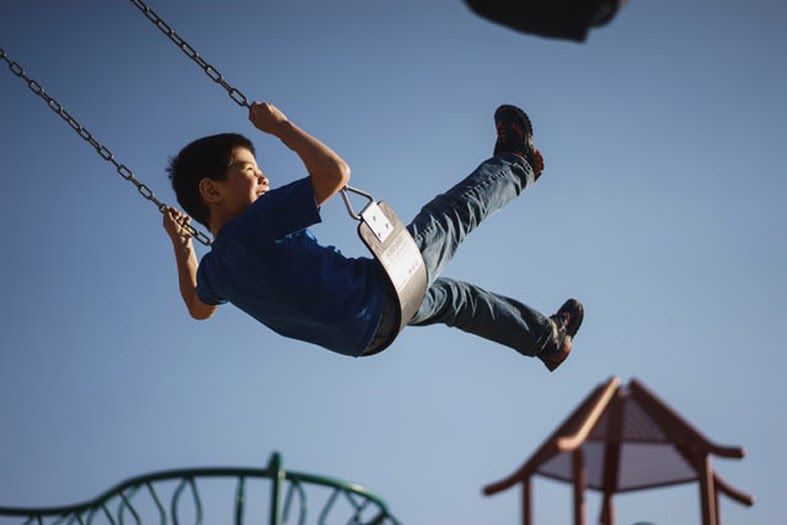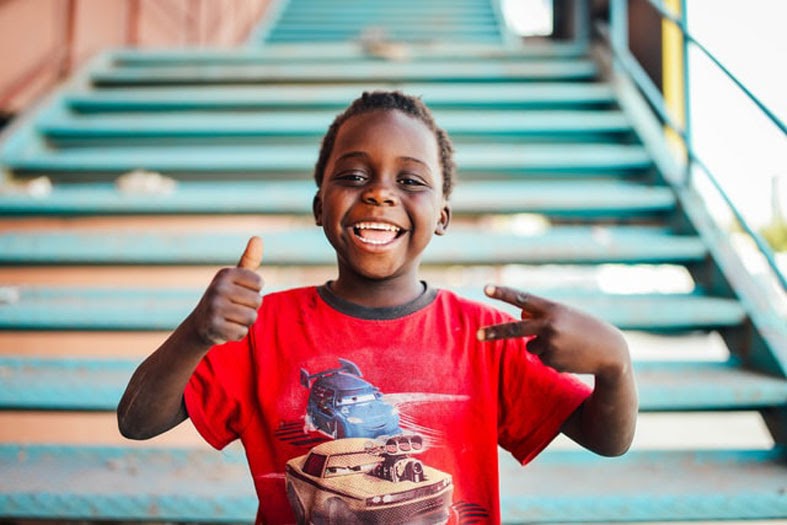Elena watched anxiously from the sidelines, arms wrapped around her chest, as her 8-year-old, Jeremiah, sat down on the soccer field. The referee blew the whistle, the sign to stop play. As the referee and the coach trotted over to Jeremiah, Elena held her breath from her perch on the bleachers, ready to run if the coach beckoned to her.
Her son stood up, wiped his hands on his shorts, and stayed on the field while the coach headed back to the sidelines — without Jeremiah, who stayed on the field!
Sighing, Elena felt the parent-ready buzzing noise leave her ears, and she allowed herself to relax. For now.

How Can I Tell if My Child is Just Anxious or Has An Anxiety Disorder?
Anxiety can take many forms with children based on their ages and environment. Understanding the difference between anxiety and an anxiety disorder will help you navigate your role in your child’s care. It’s best to see a doctor to rule out anxiety disorder, which can last throughout parts of their lives.
Being Anxious is Normal in a Child’s Development
Anxiety is often found as a response to a specific event. Perhaps your child is anticipating an event coming in the near future or feeling peer stress in the moment. It’s specific and tied to a situation.
The event, such as a wedding, may be looked forward to happily, but perhaps your child is nervous about their role in the wedding. Being in a formal event and in front of “big people,” otherwise known as adults, can be very frightening.
Or maybe, like Jeremiah, your child gets worried about letting down others their age during an important offensive attack on the soccer field. And the cheering crowd of parents? Well, anyone of ANY age can find that scary!
The American Academy of Child and Adolescent Psychiatry points out that all children experience some form of anxiety. AACAP calls it “expected and normal at specific times in development.”
AACAP also points out that just because a kid appears happy doesn’t mean they don’t ever have anxious thoughts. “Anxious children are often overly tense or uptight. Some may seek a lot of reassurance, and their worries may interfere with activities. Parents should not dismiss their child’s fears. Because anxious children may also be quiet, compliant, and eager to please, their difficulties may be missed. Parents should be alert to the signs of severe anxiety so they can intervene early to prevent complications.”

Anxiety Symptoms
Parents are especially aware of changes in their young children’s behaviors. Every kid has their way of showing their anxiety.
Situational anxiety is not related to one specific phobia but rather is more general in nature and relatively short-lasting.
Your son or daughter has their way of showing anxiety, like Elena’s son Jeremiah did by taking a break.
Here are some common symptoms of anxiety:
- Diarrhea
- Difficulty concentrating
- Dizziness
- Dry mouth
- Lightheaded
- Increased heart rate and rapid breathing
- Irritability
- Muscle tension
- Nausea
- Nervousness
- Restless or trembling
- Sweating

Anxiety Disorder Symptoms
Anxiety disorders are not uncommon and typically seen in a child who may have more complex issues emotionally and would benefit from an assessment by a child psychiatrist.
Anxiety disorder can include any of the following symptoms (according to AACAP and the American Psychological Association (APA):
- Many worries about things before they happen
- Fear of meeting people
- Extreme behavior due to fear of dogs or needles, causing significant distress
- Constant worries or concerns about family, school, friends, or activities like lunchtime
- Repetitive, unwanted thoughts (obsessions) or actions (compulsions)
- Fears of embarrassment or making mistakes
- Low self-esteem and lack of self-confidence
- Insomnia
- Hyperactivity
- Difficulty controlling impulses and risk-taking behavior
Kids With Anxiety Disorders Benefit From Support Services
Those with an anxiety disorder often have other complex emotional issues. After getting more insight into the child’s feelings, a child psychiatrist can recommend a course of treatment that may or may not involve medication but would likely include regular therapy to keep an eye on the symptoms as the child ages. Therapy will also help empower a child to learn ways to manage their anxiety.
When the child moves into the teen years, hormonal changes may require a revisit of the initial assessment and any progress made. An anxiety disorder, with its complexities and full-blown panic attacks with no obvious causes, is not to be confused with the milder anxiety attack. These are brought on by a specific situation, such as the one described earlier with Jeremiah on the soccer field.
Keep in mind that people who don’t have an anxiety disorder, as well as those who do, can both experience similar symptoms.
6 Parenting Tips To Help Your Child Cope With Worry, Anxiety
If your son or daughter has had anxiety disorder ruled out and you are managing their regular anxiety, how can you as a concerned parent help? Here are six tips to guide you as you all move forward on this challenging, but normal, new path.
 Educate Yourself and Others
Educate Yourself and Others
Remember that anxiety, nerves, and stress are normal feelings and can be managed. Even anxiety disorder is relatively common and experienced by 7.1%, or 4.4 million, children, according to the Centers for Disease Control and Prevention. This information was gathered through the National Survey of Children’s Health. The survey takes into account anxiety disorder that has been formally diagnosed for a child who is or has been seeking treatment for anxiety.
Whether your child’s situation falls in the normal scope of anxiety or they are diagnosed with a disorder, there are similar ways to treat both situations with therapy and skill management.
Remind your child, and other caregivers who have a role in his or her supervision, what first steps should be taken when anxiety begins. This helps establish a treatment routine. Structure and patience are important to calm a situation, and the plan keeps everyone on the same page.

 Rehearse Your Anxiety Plan
Rehearse Your Anxiety Plan
Once you have a plan in place, rehearsing it in a calm environment will go a long way toward reassuring everyone, most especially your son or daughter. You will both grow in confidence that you can identify any problems, make adjustments, and build teamwork along the way.
Sample Plan:
- You or your child notice anxiety developing.
- Check in with them or ask them to tell you.
- Develop signals for feeling anxious and separate signals for needing help.
You can also develop a signal they can use to help them feel more in control and calms them in the moment. For example, a simple pinky wiggle could remind them they’re fine, or placing one hand to the elbow could let them feel a soothing replacement for a hug from you.
The hope is that whether you are there physically or not, the gesture helps them to soothe themselves, remember their coping skills, and calm down quickly.
 Practice Open Listening
Practice Open Listening
If your child has been stressed in the past with school or sports, as each one resumes, ask in advance if this is something that makes them nervous. If they are new to an activity and requested it themselves, wait for them to say if they are nervous.
In either case, listen to their answer and feel free to let things sit quietly for a few minutes. He or she may say they’ve already worked through it, or they might show some hesitation as they consider their feelings.
It’s best not to downplay their concern because that closes the open communication you want to maintain. If they feel they have to look happy or be quiet about their nervousness, they will keep it bottled. Then the symptoms of irritability, nausea, dry mouth, and sweating will likely resume.
Ask open-ended questions or share thoughts that encourage them to share what they’re thinking. “So, a new school year is coming …” or “I got an email from your cross country coach that practice starts next week” are gentle ways of doing this.
Encourage your child to begin to voice their concerns without waiting to be asked. This is another step toward empowerment and self-advocacy. As they grow older and enter high school, you may want to share some of this history with their guidance counselor.
The ultimate goal is to make sure your child feels supported while teaching them to advocate for themselves. In school, that may mean knowing they can go to their counselor or ask for some extra time to turn in a stress-causing assignment.
 Be Open With Children
Be Open With Children
Offer yourself as a safe place to share worries, questions, or whatever they’ve noticed has been working for them.
Encourage them to never try to hold feelings in but rather understand them better and find a way to work through them. They will soon realize how their communication skills are helping, along with their skills of journaling or exercise.
Your child will eventually see that if they hide or mask feelings, they are keeping their anxiety symptoms inside. These hidden feelings will eventually show with outward symptoms. Proactive treatment will give them long-term coping skills as they grow into adulthood.

 Empower Your Son or Daughter
Empower Your Son or Daughter
You can make this a fun activity, too, by teaching them to be detectives who find clues to understand why an issue is bothering them. They can keep their detective hats on to investigate which therapy solution will help solve the case.
Journaling, talking, meditating, exercise, or even giving themselves a well-deserved time out from focusing on the issue may be helpful. Your child can either realize its importance has gone away with time, or be in a better frame of mind to figure out how they want to keep going through their skills to solve the case.
 Take Care of Yourself
Take Care of Yourself
It may sound simple, but your health and well-being should remain a top priority. There are two main reasons for this outlook — your children learn from your example, and you reduce your stress levels and are in a better mindset to help.
Because your son or daughter needs you, you need to be healthy and strong to be able to be relied upon. If you’re always in your room crying because you don’t know how to help them, you’re not leading any change. This doesn’t mean you aren’t allowed to be upset, just that you need to handle your feelings in a more productive, healthy way.
By gardening, going for a jog, reading a book, or practicing yoga, you will keep your mind mentally balanced. This, in turn, shows them helpful skills they can do in their lives. Invite them to join in from time to time, mentioning how or why you find it helpful.
They may take a pass, but that’s OK. They know the offer is there, and that is what’s important. And someday, you might be happy to see them appear at your side and join in.
Innovative Mental Health Care for Children and Teens
If you’re worried about your son or daughter and their struggles with anxiety or anxiety disorder, Bricolage Behavioral Health specializes in behavioral health for children ages 8-17. We offer assessments for anxiety as well as depression, self-harming behaviors, anger issues, drug and alcohol misuse, or truancy.
Based in Flower Mound, Texas, Bricolage Behavioral Health provides evidence-based care, including family integration and academic support, in the Northern Dallas/Ft. Worth area.
Our supportive mental health services are available when you need them most, and our commitment to providing high-quality care has never been more important. We have innovative care with your health in mind! Connect with us at 469-968-5700.
FAQs:
What are the signs of anxiety in a child?
Common anxiety signs in children include behavior symptoms such as nervousness, irritability, or difficulty concentrating. Physical symptoms may appear as nausea, diarrhea, dry mouth, or sweating. A child can have a panic attack related to a specific moment of stress, or a child with a diagnosed anxiety disorder can have one.
How do you help a child with anxiety?
Rehearse a plan for how to handle the next time they feel anxious. Being proactive can be empowering for all parties. On a regular basis, practice open listening to their feelings, be open for them to bring concerns to you, and take care of yourself mentally to model good skills and stay strong for them.
When should I be concerned about my child’s anxiety?
If your child shows signs of severe anxiety, with several of the associated symptoms that make everyday living hard for them, getting an assessment from a child psychiatrist or psychologist is recommended.
Seeking help is also recommended if it’s disturbing other members of your household, or if panic attacks are becoming a norm rather than infrequent. It’s helpful to pay close attention to notice any patterns you can pass along, such as what is being discussed or what activity is being done shortly before the behavior begins.
Your child’s primary care doctor or your insurance company can recommend a reputable children’s behavioral treatment center that provides assessments, or you can seek a psychiatrist at a behavioral center or regional children’s hospital to delve further.
From there, depending on the assessment, you will have a better understanding of whether it’s situational anxiety or a sign of a disorder that may require treatment through behavioral therapy or medication.



